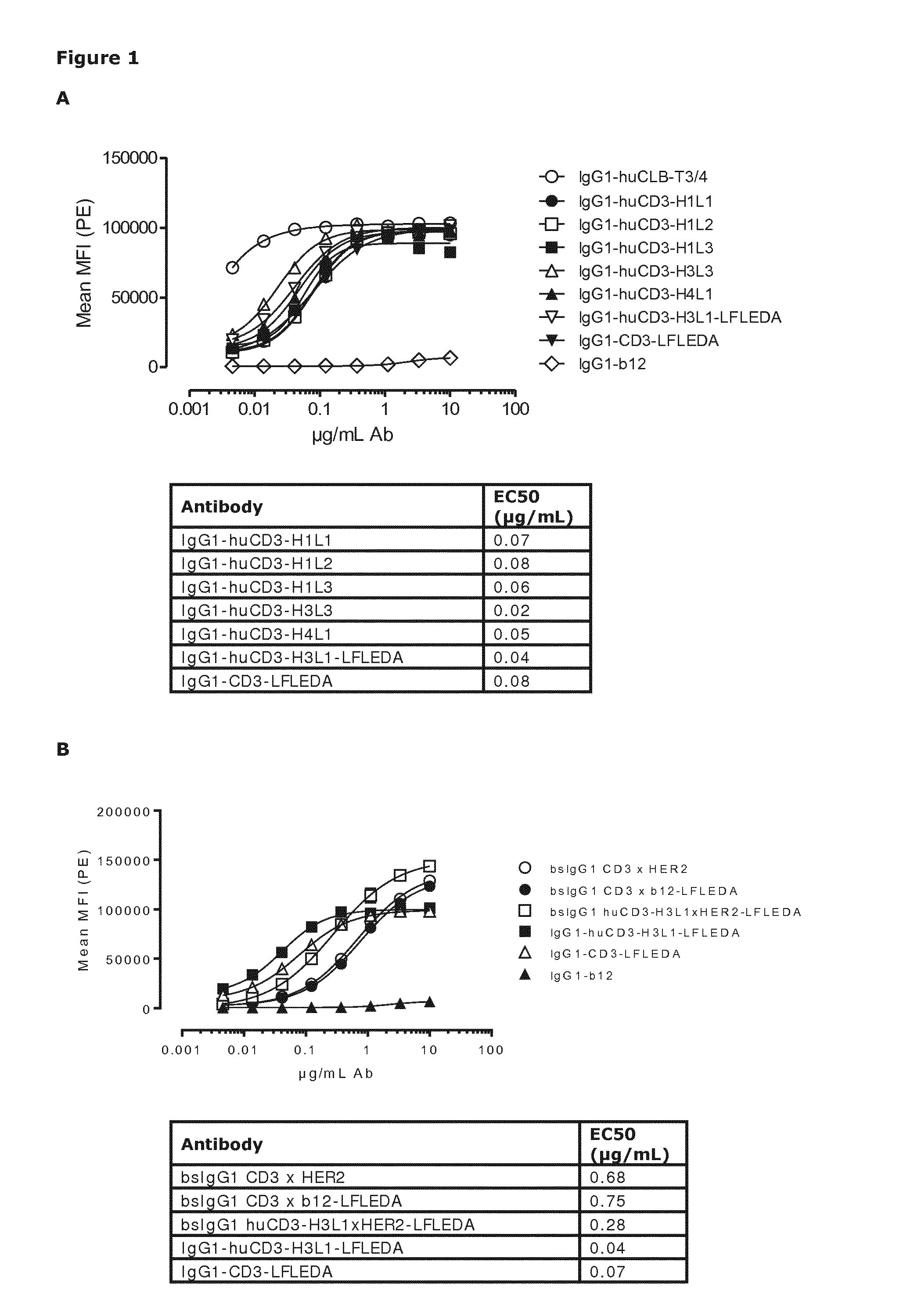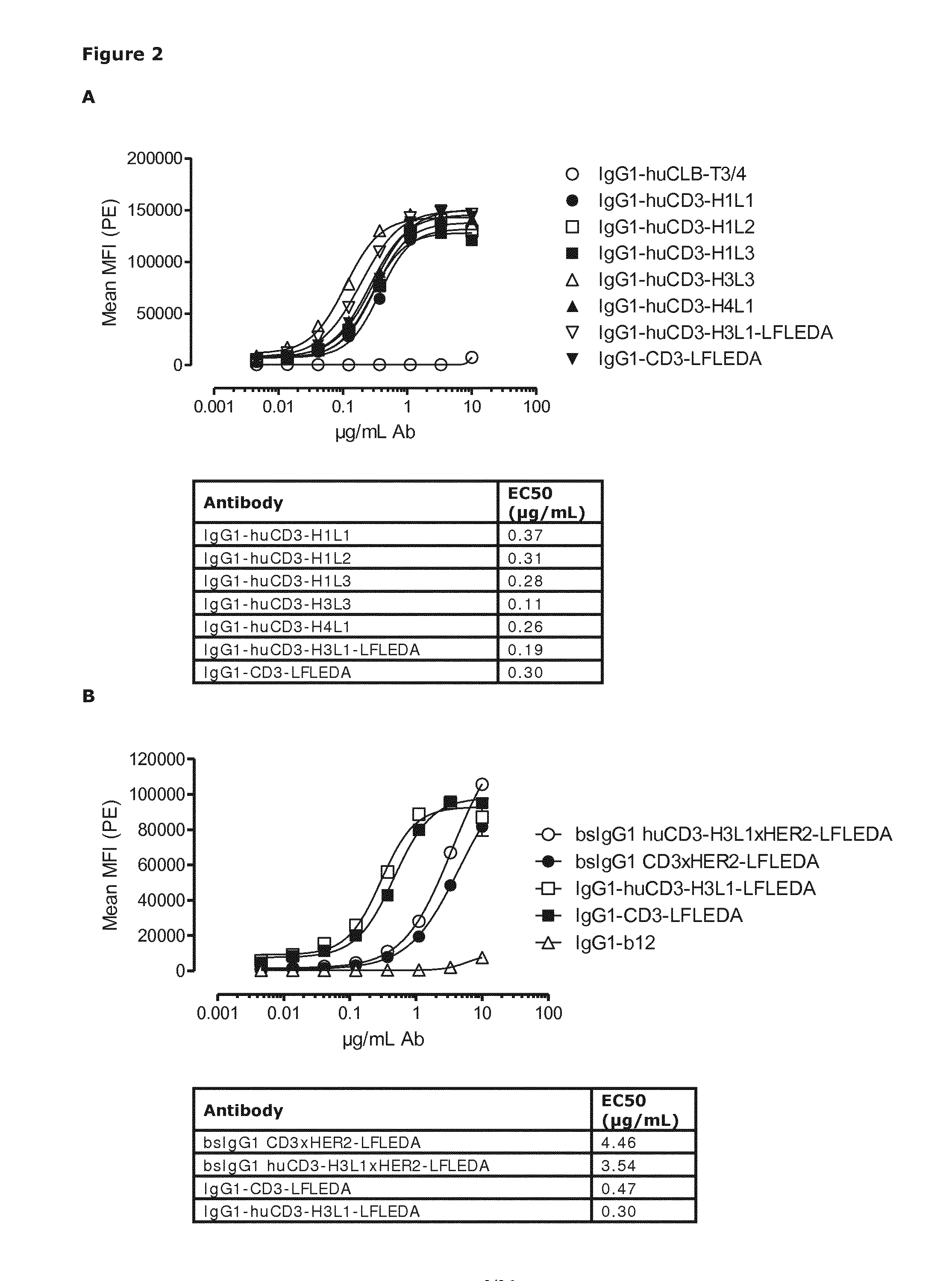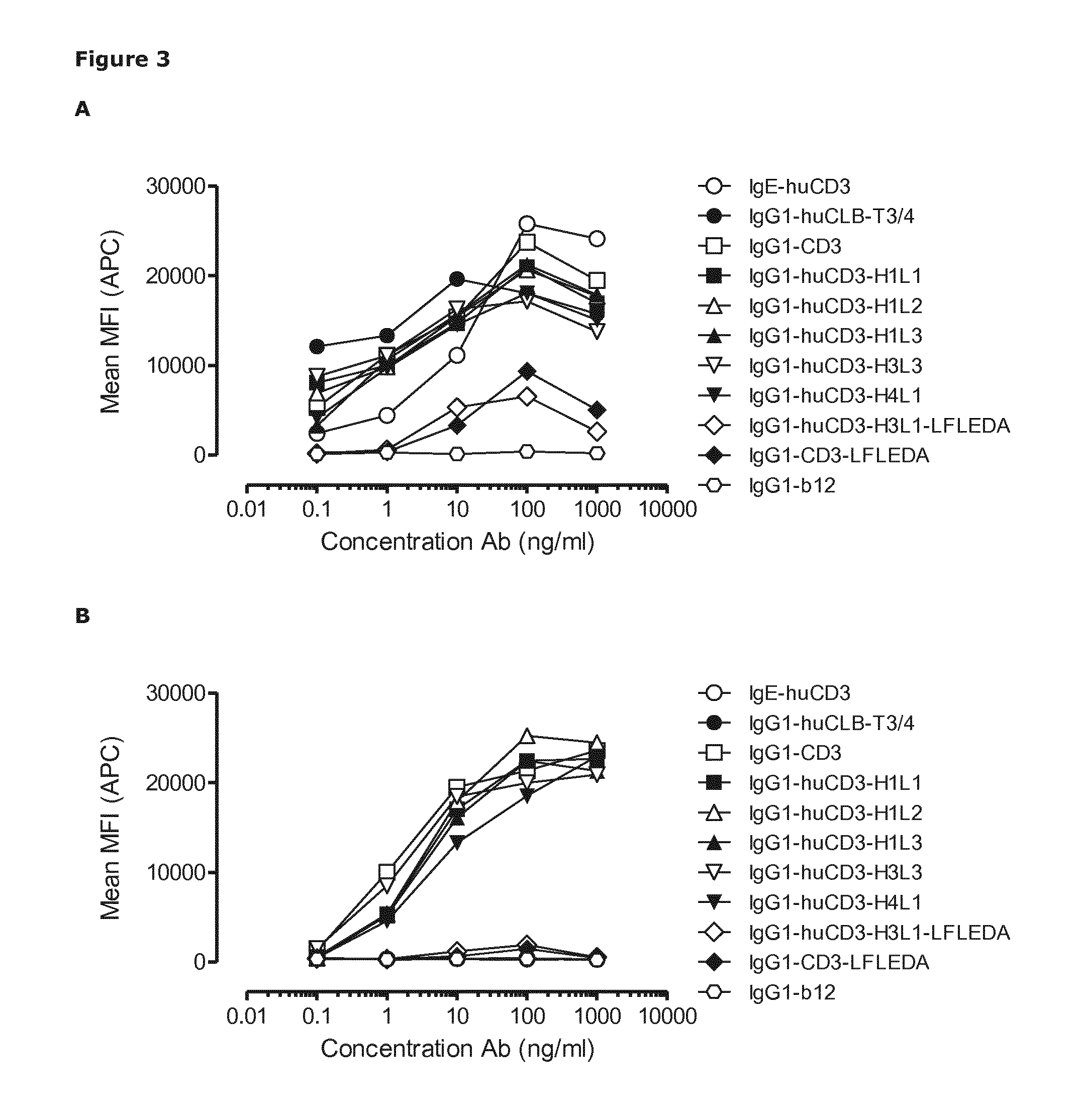Humanized or chimeric cd3 antibodies
a cd3 antibody and humanized technology, applied in the field of humanized or chimeric antibodies, can solve the problems of immunogenic mouse/rat hybridization, low efficacy, and disappointing initial clinical studies
- Summary
- Abstract
- Description
- Claims
- Application Information
AI Technical Summary
Benefits of technology
Problems solved by technology
Method used
Image
Examples
example 1
Generation of Humanized CD3 Antibodies and Non-Activating Antibody Variants
Humanization of CD3 Antibodies
[0540]Humanization of a murine CD3 antibody (U.S. Pat. No. 8,236,308, described herein as IgG1-CD3) was performed by Antitope (Cambridge, UK) using their improved version of the germline humanization (CDR-grafting) technology (EP 0 629 240). Using this technology, 4 different VH chains (SEQ ID NOs:6, 7, 8, and 9) and 3 different VL chains (SEQ ID NOs:10, 11, and 12) were designed. By combining these 4 VH with the 3 VL chains, 12 different antibodies were generated. The humanized variants are described herein as huCD3. Thus, humanized variants comprising a VH and a VL according to the invention, are described as, e.g., IgG1-huCD3-H1L1 meaning that said specific variant is of the IgG1 isotype, is a humanized CD3 and comprises the VH amino acid sequence termed “H1” and is defined according to SEQ ID NO:6, and the VL amino acid sequence termed “L1” and is defined according to SEQ ID ...
example 2
Binding of Humanized CD3 Antibodies and Non-Activating Variants Thereof to Human and Cynomolgous T-Cell Lines Expressing CD3
[0554]Binding of purified variants of humanized CD3 (huCD3) antibodies and bispecific (bs)IgG1-huCD3×HER2 molecules with or without LFLEDA mutations in the Fc region (see Example 1) to the human T-cell line Jurkat (Clone E6-1, ATCC® TIB-152T™, LGC Standards GmbH, Wesel, Germany) or the cynomolgous T-cell line HSC-F (cat. no. JCRB1164; Health Science Research Resources Bank, Osaka, Japan) was analyzed by FACS analysis. In addition to the non-activating mutations, LFLEDA, the antibody variants contained F405L or K409R mutations as described in Example 1.
[0555]Cells (1×105 cells / well) were incubated in polystyrene 96-well round-bottom plates (Greiner bio-one 650101) with serial dilutions of antibody preparations (range 5 to 10,000 ng / mL in 3-fold dilutions) in 100 μL PBS / 0.1% BSA / 0.02% azide at 4° C. for 30 min.
[0556]After washing twice in PBS / 0.1% BSA / 0.02% azide...
example 3
T-Cell Activation by Humanized CD3 Antibody Variants
[0565]CD69 expression is an early marker of T-cell activation. CD3 antibodies could mediate cross-linking of T-cells and immune cells through binding of CD3 expressed by T-cells and Fc receptors expressed by immune cells by the Fc region of the antibody, such as the IgG1 Fc region. This could lead to T-cell activation and induction of CD69. Antibody variants containing a non-activating Fc region (LFLEDA mutations) do not bind Fc receptors. Therefore, it was anticipated that non-activating CD3 antibodies do not induce T-cell activation and CD69 expression as the non-activating Fc region does not bind to Fc receptor expressing immune cells and thus cannot cross-link T-cells and immune cells.
[0566]CD69 expression on T-cells was evaluated by FACS analysis to determine early activation of T-cells after incubation with humanized CD3 (huCD3) variants with and without LFLEDA mutations in the Fc region. In addition to the non-activating mut...
PUM
| Property | Measurement | Unit |
|---|---|---|
| temperature | aaaaa | aaaaa |
| time | aaaaa | aaaaa |
| body weight | aaaaa | aaaaa |
Abstract
Description
Claims
Application Information
 Login to View More
Login to View More - R&D
- Intellectual Property
- Life Sciences
- Materials
- Tech Scout
- Unparalleled Data Quality
- Higher Quality Content
- 60% Fewer Hallucinations
Browse by: Latest US Patents, China's latest patents, Technical Efficacy Thesaurus, Application Domain, Technology Topic, Popular Technical Reports.
© 2025 PatSnap. All rights reserved.Legal|Privacy policy|Modern Slavery Act Transparency Statement|Sitemap|About US| Contact US: help@patsnap.com



